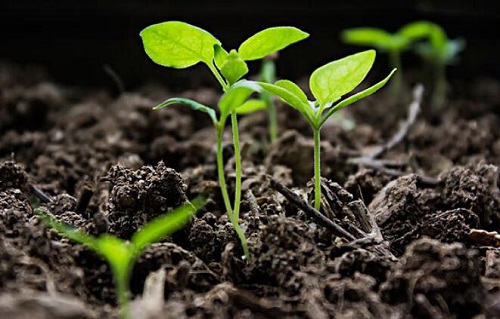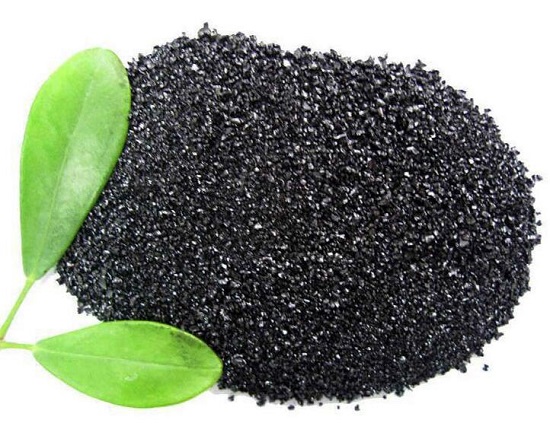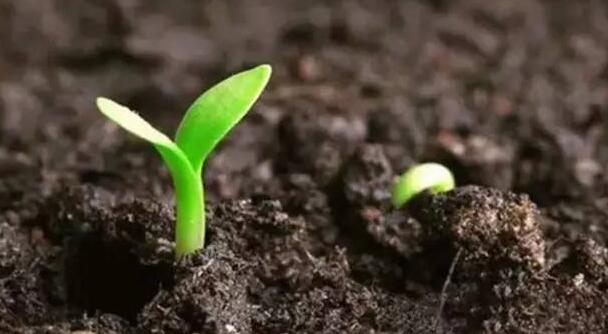
Exhibition time: 17-19 March, 2026 Shanghai, China
 中文
中文

Exhibition time: 17-19 March, 2026 Shanghai, China
 中文
中文
Humates, Humin, and Humic Acid
Humic acid is often grouped together with fulvic acid and humin. These three substances make up what we call humic content, or humus, in reference to our garden soil.
They are also sometimes referred to as humates. That title is my favorite since these three garden mates work together to dramatically improve the quality of soil for human food production.
1. Humin
To put it simply, humin is a base part of organic soil that is just there – it is completely stable, it cannot be broken down further or dissolved, such as in contact with water, or altered by other elements in the soil. That gives it staying power.
As such, humin does an amazing job of increasing the water holding capacity and improving the structure of soil. However, it contains no nutrients and doesn’t play a direct role in plant nutrition.
2. Fulvic Acid
Fulvic acid is a nutrient facilitator. When sprayed on plant leaves along with liquid organic fertilizer, it’s small particle size helps plants draw in and utilize those nutrients better.
In soil, fulvic has what’s called a “chelating” effect on the nutrients plants need to grow. That means it keeps things like phosphorous or iron from binding together and becoming inorganic. (When nutrients become inorganic, plants can’t use them.)
Unfortunately, fulvic acids aren’t as stable in the soil as humin. So, they aren’t always where you need them or in the quantities needed for the best results. As such, the benefits of fulvic acid for plant health can vary significantly in different circumstances.
3. Humic Acid Fertilizer
Humic acid is kind of like a cross between humin and fulvic acid. It provides some benefits to improve soil structure and hold water, though not as well as humin. It also helps plants uptake and absorbs nutrients, though also not quite as well as fulvic acid.
But humic acid is more abundant and easy to extract and concentrate than fulvic acid. Plus, it can break down into fulvic acid in the right conditions. It also contains a bit of nitrogen.
Basically, humic acid is like a handyman for the soil whereas humin and fulvic acid are specialists.

The Compost Connection
These humates are basically the end-product that is created after bacteria, fungi, and other biological life fully decompose organic matter. Oh, and it’s quite easy for you to make humates at home.
In fact, if you make compost, then you already do. When you take organic matter like kitchen scraps, manure, paper, and leaves and mix them in the right ratios, beneficial microlife gets to work. If given a few years to work on a pile, they’ll take all that raw organic matter and transform them into nothing but humates.
Well made compost is basically a way to fast track the creation of humic and fulvic acids and humin. However, most of us don’t age our compost long enough for it to be fully decomposed into humus. So, most compost is a mix of humus, partially decomposed organic matter, and nutrients like nitrogen, phosphorous, and potassium.

Compost vs. Humic Acid
The one problem with compost, as a source of all those garden-helping humates, is that you must add it in large quantities for it to provide effective fertility for plants. However, because you add such large quantities, compost can have a significant impact on the mineral accumulations in your soil and on soil pH.
Certain kinds of compost such as livestock manure, or compost that is aged for less than a year, may have more nutrients than your plants need. Without proper aging or if lots of acidic materials were used, the pH of the compost will unbalance the soil. So, if you just keep adding more and more compost, year after year, your soil can eventually become too alkaline or nutrient-toxic to grow healthy plants.
Also, the organic matter in compost can also rob your plants of nutrients during decomposition. That’s why it can sometimes take a couple of months before compost applied to soil really begins to benefit your plants.
Humic acid, by contrast, is pH neutral. It does contain trace amounts of nitrogen, but not more than plants will use. It also helps plants better utilize minerals in the soil. So, even if your soil has over-accumulated certain minerals, humic acid will help them grow well regardless. Finally, since humic acid is fully decomposed, it will never lock-up other nutrients in your soil.
As another bonus, when you buy a humic acid fertilizer it also contains some fulvic acids. That means you get double duty from one package.

How to Use Humic Acid Fertilizer
Now that you know a bit about humic acid and how it’s made, let’s cover a few ways to use it.
Use 1: Compost Correction
If you’ve been using compost as your primary soil amendment for a few years and are starting to see declines rather than improvement in your plant productivity and health, chances are you’ve got compost overload syndrome (COS). Basically, you’ve just given your garden too much of a good thing.
The first thing to do is to have a soil test. If your results show a high level of phosphorous and potassium and/or a pH above 7.0, plus over 15% of organic matter, you’ve got COS. So, now you need to give your garden a compost break.
You don’t want to stop making progress towards lovely loam and you don’t want your plants to suffer from undernourished soil. Also, if you have gone nutrient toxic and got your pH out of whack, you’ll need to make adjustments to your soil to be able to keep your garden productive in the meantime.
This is where humic acid comes in. You can apply this in lieu of compost to improve your soil and support plant nutrient uptake in less than ideal soil conditions. Humic acid also helps plants grow deeper roots, in that way they can grow below the top few inches where most of the nutrients accumulate.
Use 2: Seed Starting and Transplanting
You can use humic in small quantities when starting seedlings or help new plants develop strong roots in your landscape.
Liquid versions work best for seedlings. Granular applications are wonderful for transplanting.
Use 3: Mineral Deficiencies
Since humic acid contains fulvic acid and those two humates are good for helping plants access minerals, it can help you recover your mineral deficient plants. You’ll want to use it in liquid form, along with the missing nutrients.
Spray it on the undersides of the leaves of your plant. Then also apply to the soil.
Already damaged leaves can’t be saved. But if you’ve identified the mineral deficiency correctly, and there are no other issues with plant health, new leaves should grow in healthy. Also, no further discoloration of old leaves should occur.
Use 4: Heavy Feeders
Similar to using this for mineral deficiencies, you can pair it with your foliar fertilizer for your heavy feeding plants. With regular use, you may be able to reduce the amounts of N-P-K that you have to apply to get great growth rates.
Use 5: Compost Replacer
Now, I’m a fan of compost in the garden. I personally would not consider switching from compost to humic acid except to give my garden a compost break. But for some gardeners, using humic acid and not applying compost might make gardening easier.
To carefully consider that, we first have to weigh up the pros and cons of using Humic Acid.

Pros of Using Humic Acid
1. Easy to Apply
Humic acid can be applied in granular form as a soil amendment when you plant or transplant. Or, you can add it in liquid form to your watering can. So, you don’t have to add it in fall and wait until spring to plant.
2. Easy to Carry
If you have a large garden, moving around wheelbarrow after wheelbarrow of compost can be a pain. A 5-pound box of granular humic acid will cover about 500 square feet of garden space. Meanwhile, you’d need about 1.5 cubic yards or 70 bags of compost for that area.
3. Control Costs
If you are buying compost, rather than making your own, humic acid cost less than compost. You’ll also want to apply some other kinds oforganic fertilizer along with the humic acid to compensate for the minerals not supplied by compost.
But if you make your own mixes using bulk amendments, humic acid and fertilizer still cost less than buying prepared compost.
4. Carbon Stable
Even though compost is good for our gardens, it’s still a source of carbon pollution. It releases CO2 into the air during decomposition. This is often given as a reason to use humic acid rather than compost in the garden and there’s some truth in it.
(On the other side of the coin though, compost helps sink carbon in soil and cuts down on fertilizer use. Plus, in many circumstances composting reduces methane emissions. So, composting is usually considered a net benefit when it comes to counteracting climate change).

Cons of Using Humic Acid
Before you swap your compost for humic acid fertilizer, though, make sure you consider these reasons too:
1. Mined Substance
This stuff is mined just like coal or other fossil fuels. It’s made from ancient decomposed organic matter called lignite. With more time and under greater compression, this would have become coal.
So, this product is simply not as environmentally sound as creating homemade compost with waste products.
2. Cost
It may be cheaper than purchased compost. However, it always costs more than making your own compost at home.
If you want to avoid compost overload syndrome in your garden, all you need to do is age your compost for 2 years before you apply it. That mellowing time will dramatically reduce the risk of creating imbalances in your garden. Then you won’t even need to take a year off of adding compost.
3. Not Self-Sufficient
If self-sufficiency is your goal as a homesteader, this product won’t help. You’ll need to buy it rather than make it.
4. Acidic Soil
Humic acid isn’t really useful on acidic soil. Instead, use fulvic acid for that. But for vegetable gardens and in edible landscapes with a pH tending toward neutral, it works great.
5. Less Satisfaction
This one is personal for me. I love spreading compost and watching my soil gobble it up.
You don’t notice any difference in your soil when you apply humic acid fertilizer. Eventually, over a very long time, it does transform your soil color. But, it’s simply not as instantly impactful as a garden bed covered with compost.
Final Advice on Using Humic Acid
Whenever you use a new product in your garden, pay close attention to the health of your plants and let that be your guide to determine if the amendment is working. Take copious notes so you can duplicate your process or make adjustments in the future.
